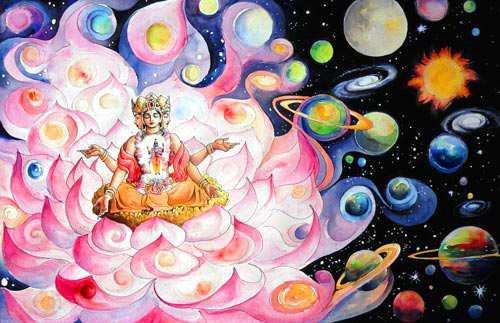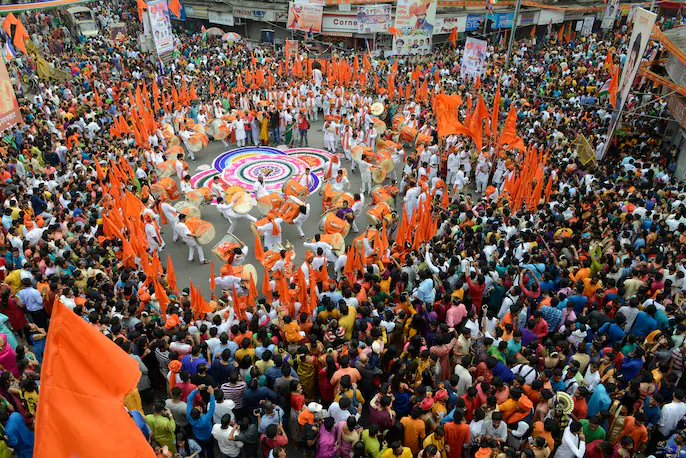Tagged: creation, growth, Gudi Padwa, harmony, havan, Hinduism, Lezhim, Lord Bhrama, Navaris, prosperity, Sanatan Dharma, shobhayatras, Ugadi, Ugadi Pachadi, Universe, Yagna
- This topic has 0 replies, 1 voice, and was last updated by .
-
AuthorPosts
-
April 9, 2024 at 11:25 am #2018Up::3
As per Sanatan Dharma, Lord Bhrama created the universe on this day. These festivals fall on the first day of the Chaitra month as per the Hindu Calendar ‘Kalnirnay’. This day is very auspicious and is considered a New Year for all people from Maharashtra, Goa, Karnataka, and Andhra Pradesh.
Gudi PadwaGudi Padwa is celebrated enthusiastically in parts of Maharashtra, Goa, and a few parts of the Konkan region. This marks the beginning of the Marathi New Year. When we fragment, the word ‘Gudi’ or ‘Gudhi’ depicts a flag of Bhramhaji. Pratipada means the first phase of the new moon. It also marks the beginning of a new harvest for farmers.

How is this festival Celebrated?
During this day, people host Gudi at their houses, which is believed to bring fame, fortune and good luck. The Gudhis are made of metal pots (Kalash), beautifully decorated with colourful clothes. Mango leaves, Neem leaves, and a Garland of flowers are attached to the ends of the Bamboo sticks. These gudis protect the home and its members from evil eyes and harmful spirits. People tend to clean their houses and apply rangoli and gudis outside their houses. Visiting the temple is a ritual, and prasad is distributed with mixed cumin seeds and gram lentils. Devotees perform pooja, yagna and havans for harmony.

Men, women, and children wear new attire and prepare traditional meal courses. They also join shobhayatras (procession), enjoying the music, dance, dhol, and tasha, among many other things. Maharashtrian women drape traditional Navaris (Nine-yards saree) and a turban (pheta).

There are processions where these women ride on bikes. Events are held where you can see performances like Lezhim, a traditional folk dance of India. People enjoy shrikhand puri sweet on this day.
UgadiUgadi is a well-known festival in southern India. It is celebrated with great joy in States like Karnataka, Telangana and Andhra Pradesh. This festival also marks the start of the New Year. Ugadi, also called Yugadi in Karnataka, combines two Sanskrit words, ‘ Yuga and ‘Adi’. This itself depicts the start of a new beginning. A festival that immediately symbolises growth, harmony, peace, prosperity and victory of good over evil.
How is this festival Celebrated?
In a few places in Karnataka, devotees prepare a paste of neem leaves mixed with tamarind, coriander seeds, and jaggery. This paste is consumed as it is said to purify the blood and boost the immune system. People start their day by taking a holy and sacred oil bath. Goddess Lakshmi is believed to reside in the oil, and Goddess Ganga in the water. A mixture of water and cow dung is sprayed in the house to keep it away from negative energy and purify it. People visit the temple and pray for their well-being and offer prayers to the almighty.

Then, panchang Shravanam is recited, and an elderly person comes forward and sings the glory of the forecast for the upcoming years based on the moon signs. Delicacies like Ugadi Pachadi (chutney) are prepared with utmost love and care in Telangana and Andhra Pradesh. It is a flavorful drink with six lavishing tastes, i.e., salty, bitter, sweet, sour, astringent, and pungent. People believe consuming this drink and food items on Ugadi brings prosperity and luck throughout the year. In comparison, dishes like Bobbatlu, Bevu Bella and Pulihora (lemon rice) found their place in Karnataka. -
AuthorPosts
- You must be logged in to reply to this topic.